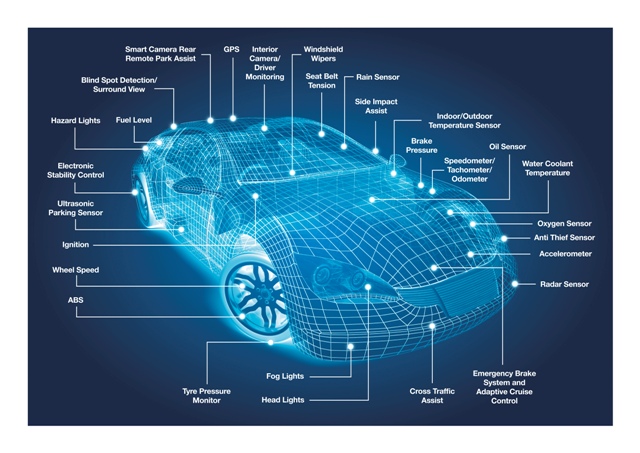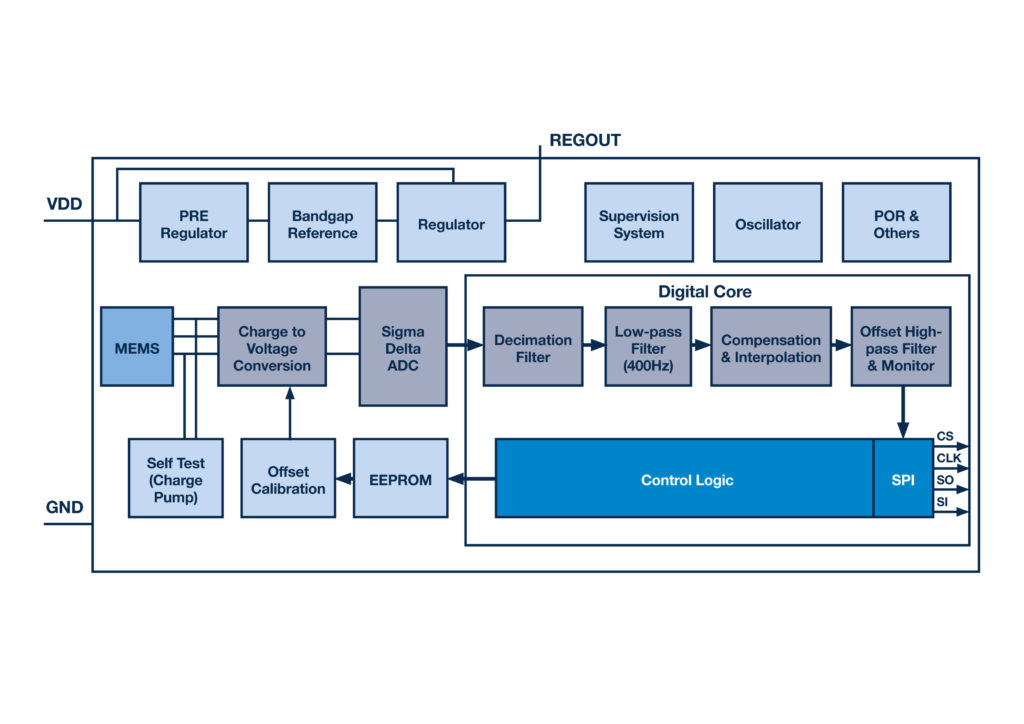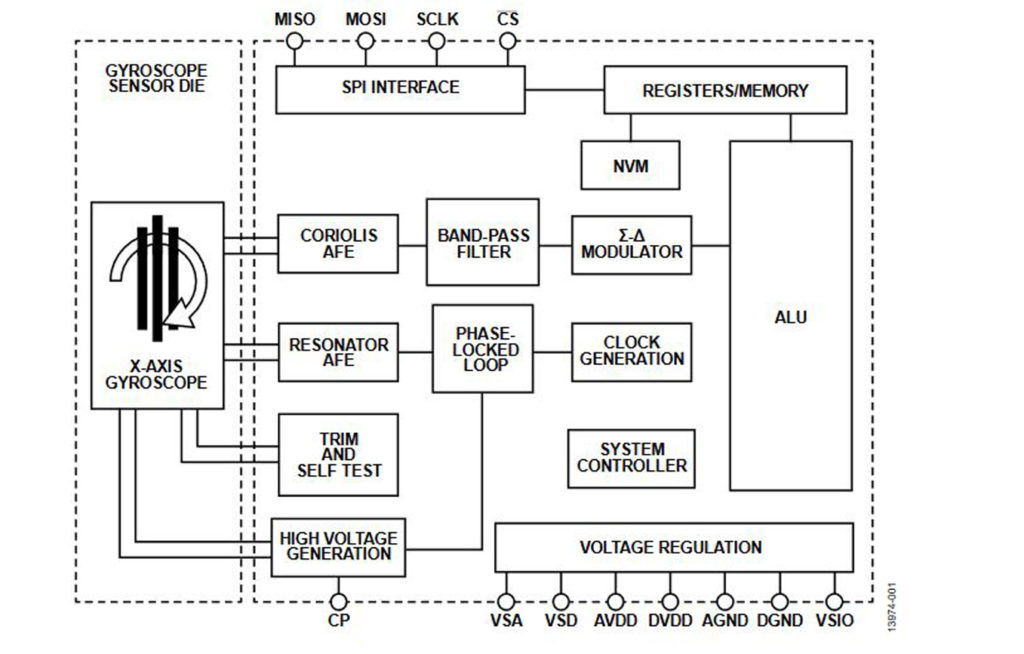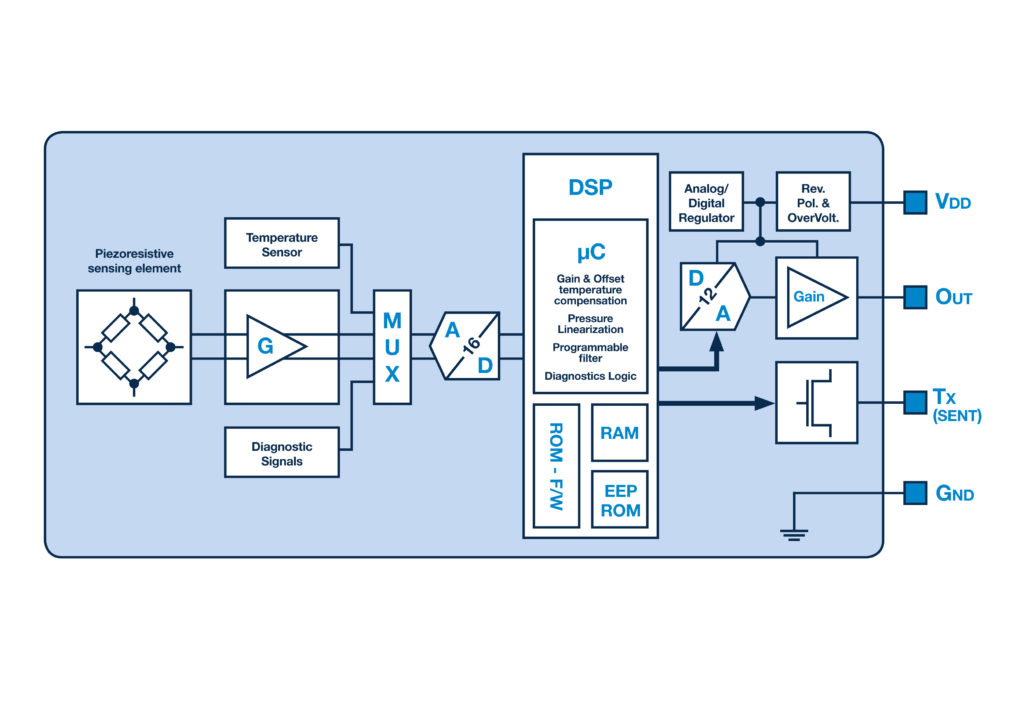By Mark Patrick, Mouser Electronics
The world of in-vehicle sensing is changing due to progress in micro electro-mechanical system (MEMS) technology. This employs advanced micro-fabrication technology to combine tiny mechanical structures, sensing devices and other electronic technologies on a single silicon substrate. Due to their reliability, small size, operational performance and relatively low cost, this new breed of sensing devices are rapidly supplanting traditional sensors, especially in the automotive sector.
MEMS-based sensing is proliferating throughout vehicles, but generally usage can be categorised into four primary sectors.
- Measurement of liquid flow and pressure
- Measurement of position and altitude with gyroscopes and accelerometers
- Environmental sensing via automotive radar
- Other applications including vision systems that are used externally to monitor the environment and internally to monitor the cabin and driver, as well as environmental sensors for air quality and temperature
 Figure 1: Illustration of automotive sensors.
Figure 1: Illustration of automotive sensors.
As vehicles become semi-autonomous, advanced driver assistance systems (ADAS) are becoming more popular, and here MEMS devices are providing the foundation for these advances, enabling far wider monitoring and control. As a result of this increased deployment of technology, modern vehicles are safer and more comfortable while consuming less fuel and releasing lower levels of harmful pollutants.
MEMS sensors are to be found in many areas of the vehicle, including anti-lock braking (ABS) and electronic stability programs (ESPs). They are also used in intelligent suspension systems, airbags and many other systems that now assist the driver.
 Figure 2: Diagram of a typical MEMS-based sensor with its accompanying conditioning circuitry.
Figure 2: Diagram of a typical MEMS-based sensor with its accompanying conditioning circuitry.
MEMS for position sensing
One of the primary devices used for position sensing is an accelerometer that measures the linear gravitational force (G-force) the vehicle is experiencing. MEMS accelerometers are particularly accurate in environments where there are high levels of electrical noise – which applies to most modern vehicles.
Piezoelectric technology is one means of creating a MEMS accelerometer; microscopic crystalline structures are deformed by the forces experienced during acceleration and the result is a small voltage that is proportional to the acceleration of the vehicle. Other technologies used in accelerometers include thermal and capacitive, and these are generally more popular with designers.
There are a variety of accelerometers on the market, and designers will make a selection for their application based on datasheet specifications. Key parameters to consider will include number of axes, reliability, measurement range, stability, bandwidth, mechanical structure, resonant frequency and power consumption.
While accelerometers measure linear acceleration, gyroscopes measure angular velocity as degrees per second (°/s) or revolutions per second (rps), thereby measuring how fast the vehicle is rotating about its axis. It is particularly important to consider noise susceptibility when selecting a suitable gyroscope for an application, as this can have a significant impact on the measurements and the accuracy of the overall system. Similar to accelerometers, reliability and temperature range are also important considerations.
One of the most common and popular applications for MEMS-based inertial sensors in vehicles is the airbag sensor that typically uses both gyroscopes and accelerometers. The accelerometer provides a continuous reading for the vehicle’s acceleration and, if a pre-set threshold is exceeded, it is determined by a microcontroller that the rapid deceleration has occurred due to a crash and the airbag is deployed. More sophisticated systems can detect the direction of impact – and whether it is a rapid deceleration (hitting an obstruction) or acceleration (being hit from the side or behind) and deploy the appropriate airbag(s) in a multi-airbag system. Gyroscopes can determine if the impact has caused the vehicle to spin.
STMicroelectronics has a wide range of MEMS-based inertial sensors. Its AIS1120SX/AIS2120SX three-axis accelerometers offer multiple operating modes for energy saving and sophisticated features such as sleep/wake. They are highly accurate due to their high resolution and low noise measuring capability which covers high-G levels, making them ideal for airbag applications. They also offer an extended temperature range that is necessary for working in the confines of many automotive applications.
Also included in the STMicroelectronics inertial measurement portfolio are the six-axis iNEMO sensors that combine an accelerometer and gyroscope in the same package.
 Figure 3: Block diagram for STMicroelectronics AIS1120SX.
Figure 3: Block diagram for STMicroelectronics AIS1120SX.
Analog Devices also offers inertial measurement MEMS solutions, such as its ADXRS910 gyroscope sensor. Designed to detect vehicle rollover, the device includes an inbuilt thermal sensor that can be used to eliminate thermal drift when measuring less extreme situations such as vehicle yaw. The ADXRS910 can therefore provide accurate measurements across its entire operating range of 40°C to +105°C, while measuring up to ±300°/sec. The device is offered in a tiny SOIC package and draws under 20mA when actively measuring. A digital SPI output makes interfacing with digital MCUs a simple task.
 Figure 4: Block diagram for the ADXRS910.
Figure 4: Block diagram for the ADXRS910.
Other types of MEMS device
Fluids such as fuel, engine oil and coolant are essential to the operation of a vehicle and must be monitored accurately to alert a driver when fuel is running low or there is a fault that has caused loss of engine oil or coolant. A pressure sensor such as the MLX90819 MEMS-based pressure sensor from Melexis is ideal for measuring these fluids as well as others such as transmission oil, refrigerant in the air-conditioning and even air pressure in braking systems on large trucks.
There are other technologies that can be used for the measurement of fluid levels, such as ultrasound – sound waves at frequencies above those that humans can detect. To measure the amount of liquid present, an ultrasonic transducer is fitted to the bottom of the vessel and a float is placed on the surface of the liquid. Sound waves are transmitted continuously and the time taken for them to travel to the float and back is measured. This technique is known as time-of-flight (ToF), and the time taken for the waves to travel is proportional to the distance. Knowing the distance to the surface (and the cross-sectional area of the vessel), the volume of liquid present can easily be calculated by an MCU.
The speed of the sound waves will vary with temperature, and liquids such as engine oil or coolant can be hot or cold depending on how long the vehicle has been running. Many liquid sensors incorporate a thermal sensor so this can be taken into account, and an accurate measurement produced at all temperatures. Ultrasound is versatile and can also be used to produce flow sensors that measure the speed a liquid is travelling.
In order to simplify system design, many sensors are available as a system-on-chip (SoC) that incorporates an analogue front end (AFE) allowing for highly accurate measurement. Texas Instruments’ TDC1000 is a highly integrated AFE that can be used for fluid measurement and proximity measurement in automotive applications. Easily interfaced to an MCU, this device enables designers to build a complete ultrasonic sensing system.
 Figure 5: Block diagram for the MLX90819.
Figure 5: Block diagram for the MLX90819.
Summary
MEMS technology has changed the way that sensing is performed in vehicles, bringing improved performance and reduced costs in a tiny, robust form factor. The incorporation of this technology into vehicles, and its continued development, will be a significant driver as automakers continue the path to fully autonomous vehicles.






